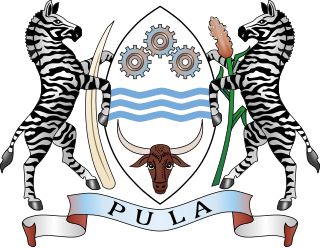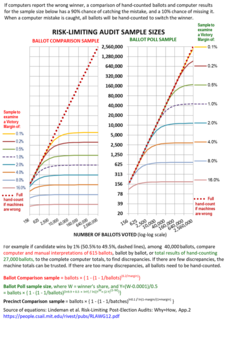Related Research Articles

David A. Wagner is a Professor of Computer Science at the University of California, Berkeley and a well-known researcher in cryptography and computer security. He is a member of the Election Assistance Commission's Technical Guidelines Development Committee, tasked with assisting the EAC in drafting the Voluntary Voting System Guidelines. He is also a member of the ACCURATE project.
Electronic voting is voting that uses electronic means to either aid or take care of casting and counting votes.

The Help America Vote Act of 2002, or HAVA, is a United States federal law which passed in the House 357-48 and 92-2 in the Senate and was signed into law by President Bush on October 29, 2002. The bill was drafted in reaction to the controversy surrounding the 2000 U.S. presidential election, when almost two million ballots were disqualified because they registered multiple votes or none when run through vote-counting machines.

The Election Assistance Commission (EAC) is an independent agency of the United States government created by the Help America Vote Act of 2002 (HAVA). The Commission serves as a national clearinghouse and resource of information regarding election administration. It is charged with administering payments to states and developing guidance to meet HAVA requirements, adopting voluntary voting system guidelines, and accrediting voting system test laboratories and certifying voting equipment. It is also charged with developing and maintaining a national mail voter registration form.
There exist various methods through which the ballots cast at an election may be counted, prior to applying a voting system to obtain one or more winners.

In elections in the United States, a provisional ballot is used to record a vote when there are questions about a given voter's eligibility that must be resolved before the vote can count. The federal Help America Vote Act of 2002 guarantees that, in most states, the voter can cast a provisional ballot if the voter states that he or she is entitled to vote.
Voter verifiable paper audit trail (VVPAT) or verifiable paper record (VPR) is a method of providing feedback to voters using a ballotless voting system. A VVPAT is intended as an independent verification system for voting machines designed to allow voters to verify that their vote was cast correctly, to detect possible election fraud or malfunction, and to provide a means to audit the stored electronic results. It contains the name of the candidate and symbol of the party/individual candidate.The VVPAT must be destroyed by the voter before leaving the room.

Election Systems & Software (ES&S) is an Omaha, Nebraska-based company that manufactures and sells voting machine equipment and services. The company's offerings include vote tabulators, direct-recording electronic (DRE) machines, voter registration and election management systems, ballot-marking devices, electronic poll books, Ballot on Demand printing services, and absentee voting-by-mail services.
A direct-recording electronic (DRE) voting machine records votes by means of a ballot display provided with mechanical or electro-optical components that can be activated by the voter ; that processes data by means of a computer program; and that records voting data and ballot images in memory components. After the election it produces a tabulation of the voting data stored in a removable memory component and as printed copy. The system may also provide a means for transmitting individual ballots or vote totals to a central location for consolidating and reporting results from precincts at the central location. The device started to be massively used in 1996, in Brazil, where 100% of the elections voting system is carried out using machines.

Elections in Botswana take place within the framework of a multi-party democracy and a parliamentary system. The National Assembly is mostly directly elected, and in turn elects the President and some of its own members. The Ntlo ya Dikgosi is a mixture of appointed, hereditary and indirectly elected members.
Various governments require a certification of voting machines.

ThreeBallot is a voting protocol invented by Ron Rivest in 2006. ThreeBallot is an end-to-end (E2E) auditable voting system that can in principle be implemented on paper. The goal in its design was to provide some of the benefits of a cryptographic voting system without using cryptographic keys.
The term "software independence" (SI) was coined by Dr. Ron Rivest and NIST researcher John Wack. A software independent voting machine is one whose tabulation record does not rely solely on software. The goal of an SI system is to definitively determine whether all votes were recorded legitimately or in error.
The Voluntary Voting System Guidelines (VVSG) are guidelines adopted by the United States Election Assistance Commission (EAC) for the certification of voting systems. The National Institute of Standards and Technology's Technical Guidelines Development Committee drafts the VVSG and gives them to the EAC in draft form for their adoption.
The following is a list of examples of electronic voting from elections around the world. Examples include polling place voting electronic voting and Internet voting.
Election Markup Language (EML) is an XML-based standard to support end to end management of election processes.

A risk limiting post-election audit is one of several types of election audits. It is based on hand counts of statistical samples of paper ballots, which are stored from election day to the time of the audit. It tests whether election results identified the correct winner(s). Specifically, if samples find few discrepancies, the public knows there is a limited risk that the initial winners are wrong. If samples find substantial discrepancies, the risk-limiting audit, like most but not all other election audits, requires a 100% recount by hand, to identify the correct winner(s).
Election auditing refers to any review conducted after polls close for the purpose of determining whether the votes were counted accurately or whether proper procedures were followed, or both.
References
- ↑ EAC's Voluntary Voting System Guidelines Volume 1 Archived 2006-02-08 at the Wayback Machine . §7.8
- ↑ EAC's Voluntary Voting System Guidelines Volume 1 Archived 2006-02-08 at the Wayback Machine . §C.1.2.4
| This election-related article is a stub. You can help Wikipedia by expanding it. |